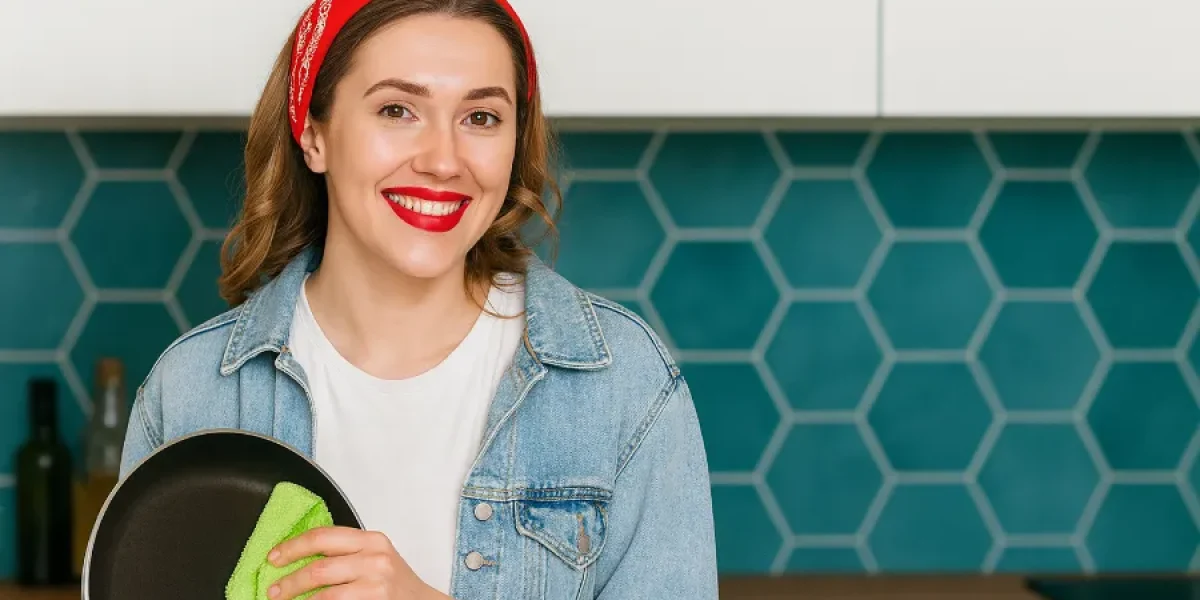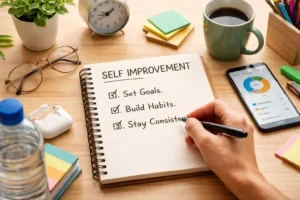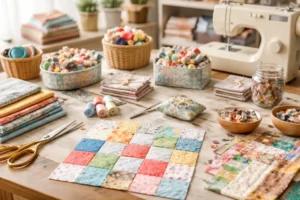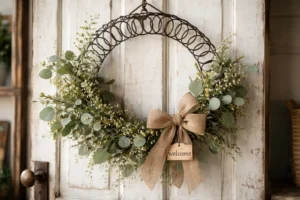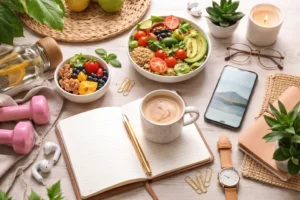I’ll never forget the day I decided to stop using paper towels for cleaning greasy pans. After one too many rolls shredded into useless scraps, I said, “There’s got to be a better way to clean pans” and what started as curiosity became a mission. Fast forward, and I’ve tried all kinds of cloths, textures, and routines. Today I want to share what works (and what doesn’t) in my kitchen adventures, so you too can keep your pans shining without waste, frustration, or harsh chemicals.
Eco-Friendly Cloths
Let’s start at the top of the list, because for me, the shift to eco-friendly cloths was the turning point. Before, I’d reach for paper towels or harsh scrubbers and feel guilty watching trash pile up. Now? I reach for a stack of cloths that I wash, reuse, and rotate.
Here’s what I looked for:
- Durability (so they survive frequent washes)
- Good absorbency (so grease doesn’t smear)
- Materials that are safe for food-contact surfaces
Switching to eco-friendly cloths meant cleaning pans felt more sustainable less waste, fewer chemicals, and more peace of mind. When your cleaning tools last, it feels less like a chore and more like a new kitchen habit.
Cotton Cloths
Cotton cloths are where many people (including me) start. They’re soft, forgiving, and familiar. But to use them well on greasy cookware, I learned a few tricks:
- Go for a tight weave: loosely woven cotton might soak grease but fall apart too soon.
- Always saturate with hot water first—that heat helps break down oil.
- Use gentle pressure and circular motions; cotton gives you some scrub without scratching.
- Rinse frequently while wiping so you’re not spreading grease around.
Over time, my cotton cloths held up beautifully. I still have a couple from years ago in my cloth rotation. When handled right, cotton is a trusty go-to for everyday clean pans tasks.
Terry Cloths
One day I decided to test something thicker. Enter terry cloths—those looped-face cloths that feel plush. I’ll admit, I was skeptical at first, but they surprised me.
Why I love terry cloths for greasy pans:
- The loops trap oil well and prevent smearing
- They offer a gentle scrub without needing anything too abrasive
- They stand up to repeated washing
I throw a few of these into my daily rotation. For those days when I’ve cooked with butter, bacon fat, or heavy sauces, the terry cloths give that extra soak and grit without being harsh.
Wash Cloths
“Wash cloths?” you might scoff. But small sometimes equals mighty. In my kitchen, a wash cloth is my “go-to for corners, rims, and tight spots” tool.
Here’s how I use them:
- After the bulk grease is wiped out, I dip a wash cloth in hot water and slide it around corners where residue hides
- They’re great for a final wipe-down because the small size makes them easy to control
- Toss them in the wash after one round and they’re back for duty
They don’t replace my thicker cloths, but in the cleanup chain, wash cloths help me finish pans without missing edges.
Oil Stains
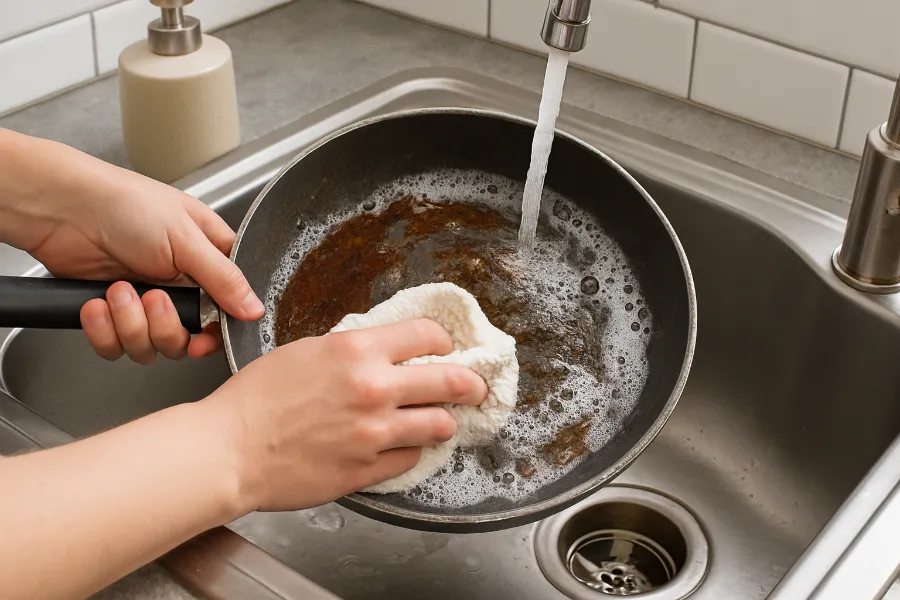
One of my biggest challenges in the early days was oil stains. You think you’re done, but days later there’s a sheen or sticky spot on the pan bottom.
Here’s how I learned to manage them:
- Blot first — use a dry-ish cloth to soak up fresh oil before it settles
- Hot water + a drop of dish soap — helps break the bond between oil and metal
- Weekly deep clean — I soak my oily pans (and cloths) in a vinegar + baking soda mixture to prevent staining
- Don’t let grease sit — the longer oil stays, the harder it sticks
Over time, I caught myself “feeling” my pans for stickiness before storing them. If I detect any slickness, I re-wipe with a damp cloth before putting the pan away.
Grease Removal
Let’s get into the meat of it: grease removal. For me, it’s a multi-step ritual that takes maybe two extra minutes but saves me headaches later.
Here’s my step-by-step routine:
- Use a spatula to remove leftover food and big globules of grease
- Dampen a cloth with hot water (very important)
- Add a dab of dish soap or eco-friendly degreaser
- Scrub gently in circles, applying a bit more pressure only where needed
- Rinse the cloth and repeat until the pan feels smooth
- Final wipe with a fresh damp cloth to catch residue
Doing this methodically helps me consistently clean pans without leaving hidden grease behind. It’s slower than a throw-and-rinse approach, but oh-so worth it.
Scrub Cloths
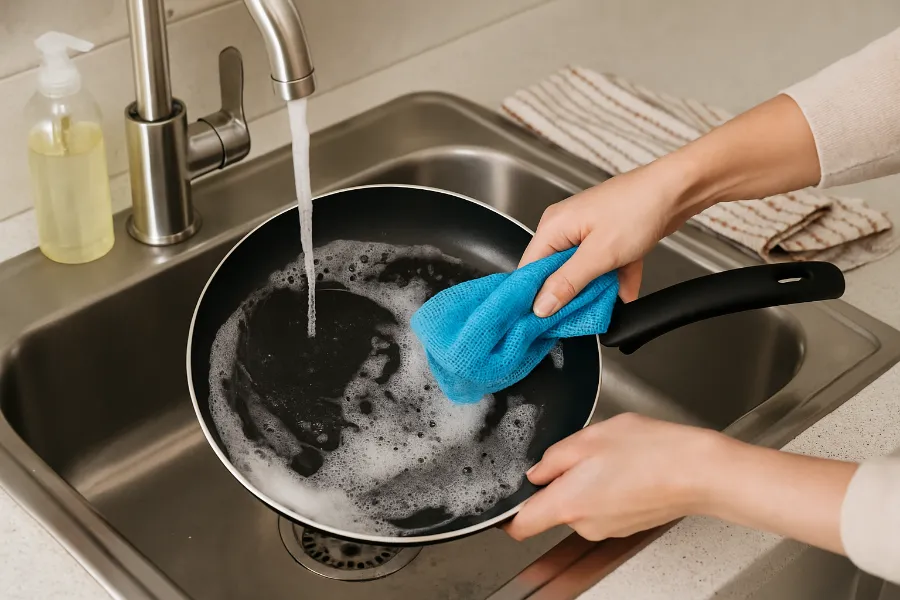
When I have a pan that’s caked with sauce or baked-on bits, I reach for my scrub cloths. These are cloths with texture—slightly rough side or weave—that give friction without being abrasive.
What I like about scrub cloths:
- They let me remove stubborn grime without resorting to steel wool
- I can use one side for scrubbing, another side for wiping
- They work on many surfaces, including stainless, cast iron (once seasoned), and nonstick (but carefully)
I keep about two dedicated scrub cloths in rotation. When one wears out, I replace it—but they last a long time.
Waffle Weave Cloths
My personal favorite surprise winner? Waffle weave cloths. The pattern looks decorative, but functionally it’s brilliant for grease battles.
Why waffle weave works beautifully for clean pans:
- The ridges and pockets “grab” and trap oil
- Goes deep enough to scrub but soft enough to avoid scratching
- Dries quickly, so odor or mildew doesn’t build
- Thick without being too bulky
I often reserve these for my greasiest jobs—roasting pans, cast iron after frying, etc. When the waffle cloth gets greasy, I rinse and let it air dry; it’s ready for the next round.
Microfiber Cloths
Last but far from least are microfiber cloths. These have been around for a while in cleaning circles, but using them for greasy cookware took me time to master.
What microfiber cloths bring to the party:
- The split fibers pick up grease particles that smoother cloths leave behind
- Light feel, fast-drying—less heaviness from soaked oil
- Great for gentle wipe-downs after you’ve removed most grease
A couple of cautions: do not use fabric softener (it clogs the fibers) and avoid high heat in the dryer. When treated properly, microfiber cloths help me get that final mirror shine on pans after the heavy lifting is done.
My Cloth Rotation (Because It Matters)
It can get confusing with so many cloth options. Here’s how I organize mine so each type gets a fair turn and long life:
- Daily cloths: cotton or terry
- Tough jobs: waffle weave or scrub
- Final wipe / detail: wash cloth or microfiber
- Deep-clean day cloths: I dedicate one or two that are seasoned for heavy vinegar soak days
With this rotation, no cloth gets “overworked,” and I avoid the stink or brittleness that kills cloth performance.
Why This Works Better Than Paper Towels
When I made the switch, I faced skeptics (mostly myself). Would cloths be messy? Would they degrade? Would I waste too much water washing them?

Here are the lessons I learned:
- Cloths don’t tear like paper towels—even when soaked
- The waste reduction is incredible (my trash bin is lighter)
- Cloths gain “character,” not damage—tiny stains don’t affect function
- Washing them is faster and simpler than you might think
- It actually saves money long-term
Now when guests ask how I keep my pans so spotless, I don’t shy away. I say, “It’s just cloths and a little routine.” And they believe me—because they can see the clean pans.
Final Thoughts
If your goal is to clean pans without the waste, chemicals, or hassle, swapping in well-chosen cloths is a game-changer. Use eco-friendly cloths as your foundation, then keep cotton, terry, wash cloths, scrub, waffle weave, and microfiber in your toolkit. For oil stains and grease removal, I’ve found consistency, heat, and a little patience are the secret weapons.
Over time, this approach becomes second nature. You’ll instinctively reach for the cloth that fits the job, sense when a pan needs another wipe, and feel proud knowing your kitchen is cleaner, greener, and kinder.

